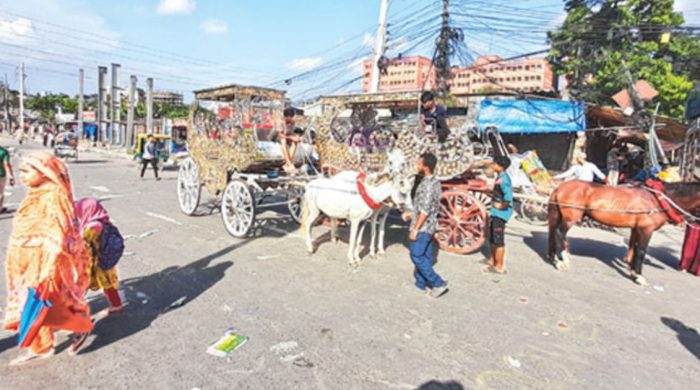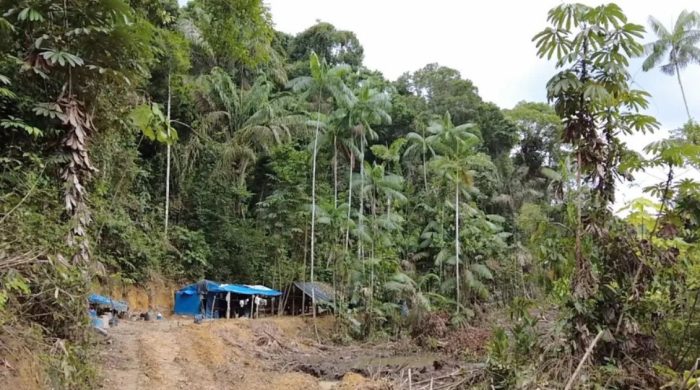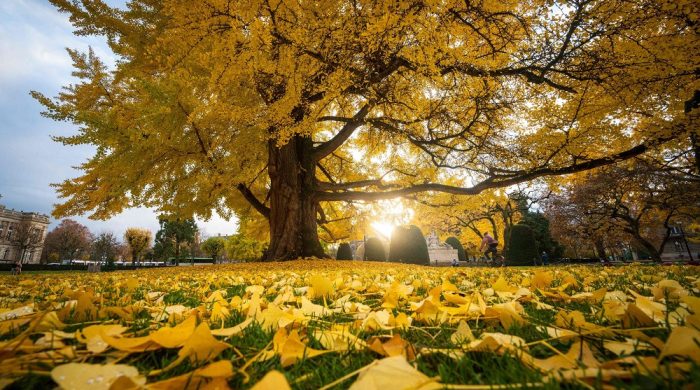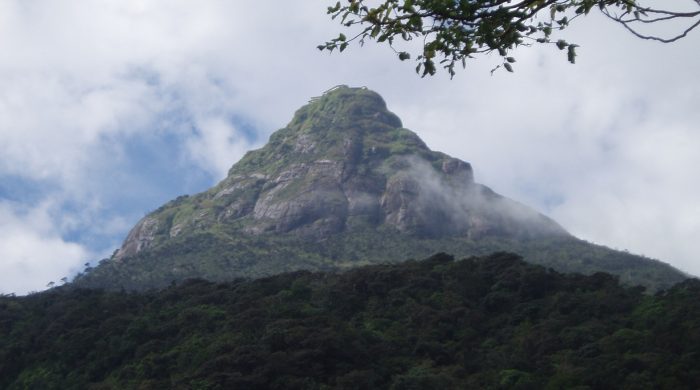With thousands of students coming out on streets to observe a non-cooperation programme demanding the resignation of the incumbent government, the movement of public transports came to a halt on all major roads of Dhaka on Sunday.
The Rampura-Badda-Kuril Road, one of the busiest streets in the capital, was completely paralysed by the anti-government protesters.
The commuters who had to come out of homes for going to offices and for other emergency purposes, were seen traveling by private vehicles, while many were walking to their destinations.
However, taking advantage of the public transport shutdown, battery-powered rickshaws and pedal-powered rickshaws dominated on this road on Sunday.
Even, several horse-drawn carriages were also seen operating on the road.
They were seen traveling freely from one end of the city to the other with passengers.
Thousands of protesters occupied the entire Rampura-Badda-Kuril road from Sunday morning.
From the northern end of Jamuna Future Park to the northern end of the Notun Bazar diplomatic zone, students from various schools, colleges, madrasas, and universities, along with guardians, teachers, and people from different professions participated in the movement.
Moreover, students from Brac University, East West University, and Canadian University, along with their guardians took position at different places on the road.
As this busy road was fully occupied by the demonstrators, no public transport could operate there.
In the absence of any traffic police on the entire road, battery-powered rickshaws were moving alongside pedal-powered rickshaws.
While one side of the divider was occupied by demonstrators, these vehicles traveled on the other side.
Faced with pressure from the demonstrators at various points, these drivers were also changing lanes to carry passengers to their destinations.
From the northern side of Rampura Bridge, horse rider Zakir was picking up passengers heading towards Kuril in a horse-drawn carriage. When asked, he told the Daily Sun, “There is no public transport on the roads today. Many people are having to walk. So we are serving passengers on the main road.”























